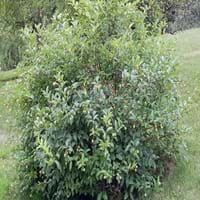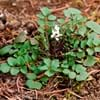Life Span
Annual
Annual and Perennial
Origin
Europe, Asia
South Africa
Types
Admiral Pepper,Bell Pepper,Mohawk Pepper,Yolo Wonder Pepper
Not Available
Number of Varieties
Not Available
Habitat
Cropland, Oil fields, Waste areas
Boggy areas, Dappled Shade, Shady Edge, Sunny Edge, Woodland Garden Canopy
USDA Hardiness Zone
4-9
9-11
AHS Heat Zone
Not Available
9-1
Sunset Zone
Not Available
H1, 14, 15, 16, 17, 18, 19, 20, 21, 22, 23, 24
Habit
Clump-Forming
Upright/Erect
Flower Color
White
Light Yellow, Ivory
Flower Color Modifier
Not Available
Not Available
Fruit Color
Green, Tan
Brown
Leaf Color in Spring
Green
Green
Leaf Color in Summer
Not Available
Green
Leaf Color in Fall
Green
Green
Leaf Color in Winter
Green
Green
Leaf Shape
Egg-shaped
Egg-shaped
Plant Season
Not Available
Spring, Summer, Fall, Winter
Sunlight
Full Sun, Partial Sun
Full Sun, Partial Sun
Growth Rate
Very Fast
Medium
Type of Soil
Clay, Loam, Sand
Loam, Sand
The pH of Soil
Acidic, Neutral, Alkaline
Acidic, Neutral
Soil Drainage
Well drained
Average
Bloom Time
Early Spring, Spring, Late Spring, Late Fall, Early Winter, Winter, Late Winter
Early Spring, Spring, Late Spring, Winter, Late Winter
Tolerances
Pollution
Wet Site
Where to Plant?
Ground, Pot
Ground, Pot
How to Plant?
Stem Planting, Transplanting
Seedlings, Stem Cutting
Plant Maintenance
Medium
Medium
Watering Requirements
Prefer drip-irrigation instead of Over-head watering, Water Deeply
Requires 4 to 8 inches of water above the soil line
In Summer
Lots of watering
Lots of watering
In Spring
Moderate
Moderate
In Winter
Average Water
Average Water
Soil pH
Acidic, Neutral, Alkaline
Acidic, Neutral
Soil Type
Clay, Loam, Sand
Loam, Sand
Soil Drainage Capacity
Well drained
Average
Sun Exposure
Full Sun, Partial Sun
Full Sun, Partial Sun
Pruning
Prune ocassionally, Prune to control growth
Prune in early summer, Remove damaged leaves, Remove dead branches, Remove dead leaves, Trim each shoot back to the first set of leaves
Fertilizers
All-Purpose Liquid Fertilizer
All-Purpose Liquid Fertilizer
Pests and Diseases
Not Available
Red blotch
Plant Tolerance
Drought
Wet Site
Flowers
Insignificant
Yes
Flower Petal Number
Single
Not Available
Fragrant Flower
No
Not Available
Fragrant Leaf
No
Not Available
Fragrant Bark/Stem
No
Not Available
Foliage Texture
Fine
Fine
Foliage Sheen
Not Available
Matte
Attracts
Not Available
Butterflies
Allergy
Not Available
Toxic
Aesthetic Uses
Not Used For Aesthetic Purpose
Showy Purposes
Beauty Benefits
Not Available
Not Available
Environmental Uses
Air purification
Air purification
Medicinal Uses
Not Available
Astringent, Diaphoretic, Diuretic, Emetic, Febrifuge, Laxative, Odontalgic, Ophthalmic, Tonic
Part of Plant Used
Not Available
Bark, Fruits, Inner Bark, Root, Wood
Other Uses
Unknown
Used for woodware
Used As Indoor Plant
No
No
Used As Outdoor Plant
Yes
Yes
Garden Design
Not Available
Bog Garden, Cutflower, Dried Flower, Everlasting, Feature Plant, Mixed Border, Tropical
Botanical Name
CARDAMINE hirsuta
BERZELIA lanuginosa
Common Name
Hairy Bittercress
Buttonbush
In Hindi
बालों वाली Bittercress
Buttonbush shrub
In German
Hairy Bittercress
Button Strauch
In French
Bittercress Poilu
buttonbush arbuste
In Spanish
Bittercress Peludo
arbusto buttonbush
In Greek
τριχωτές Bittercress
Buttonbush θάμνος
In Portuguese
Bittercress cabeludo
arbusto Buttonbush
In Polish
włochaty Bittercress
Buttonbush krzew
In Latin
pilosus bittercress
Frutex Buttonbush
Phylum
Magnoliophyta
Magnoliophyta
Class
Magnoliopsida
Magnoliopsida
Order
Brassicales
Rubiales
Family
Brassicaceae
Bruniaceae
Genus
Cardamine
Cephalanthus
Clade
Not Available
Angiosperms, Asterids, Eudicots
Tribe
Not Available
Not Available
Subfamily
Not Available
Not Available
Number of Species
Not Available
Season and Care of Hairy Bittercress and Buttonbush
Season and care of Hairy Bittercress and Buttonbush is important to know. While considering everything about Hairy Bittercress and Buttonbush Care, growing season is an essential factor. Hairy Bittercress season is Not Available and Buttonbush season is Not Available. The type of soil for Hairy Bittercress is Clay, Loam, Sand and for Buttonbush is Loam, Sand while the PH of soil for Hairy Bittercress is Acidic, Neutral, Alkaline and for Buttonbush is Acidic, Neutral.
Hairy Bittercress and Buttonbush Physical Information
Hairy Bittercress and Buttonbush physical information is very important for comparison. Hairy Bittercress height is 10.20 cm and width 5.10 cm whereas Buttonbush height is 365.76 cm and width 182.88 cm. The color specification of Hairy Bittercress and Buttonbush are as follows:
Hairy Bittercress flower color: White
Hairy Bittercress leaf color: Green
Buttonbush flower color: Light Yellow and Ivory
- Buttonbush leaf color: Green
Care of Hairy Bittercress and Buttonbush
Care of Hairy Bittercress and Buttonbush include pruning, fertilizers, watering etc. Hairy Bittercress pruning is done Prune ocassionally and Prune to control growth and Buttonbush pruning is done Prune in early summer, Remove damaged leaves, Remove dead branches, Remove dead leaves and Trim each shoot back to the first set of leaves. In summer Hairy Bittercress needs Lots of watering and in winter, it needs Average Water. Whereas, in summer Buttonbush needs Lots of watering and in winter, it needs Average Water.





